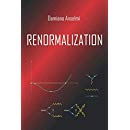Quantization
Talk given at the Conference “Scale invariance in particle physics and cosmology“, CERN, on January 29th, 2019
A new quantization prescription is able to endow quantum field theory with a new type of “particle”, the fakeon (fake particle), which mediates interactions, but cannot be observed. A massive fakeon of spin 2 (together with a scalar field) allows us to build a theory of quantum gravity that is both renormalizable and unitary, and to some extent unique. After presenting the general properties of this theory, I discuss its classical limit, which carries important remnants of the fakeon quantization prescription.
Under certain assumptions, it is possible to make sense of higher derivative theories by quantizing the unwanted degrees of freedom as fakeons, which are later projected away. Then the true classical limit is obtained by classicizing the quantum theory. Since quantum field theory is formulated perturbatively, the classicization is also perturbative. After deriving a number of properties in a general setting, we consider the theory of quantum gravity that emerges from the fakeon idea and study its classicization, focusing on the FLRW metric. We point out cases where the fakeon projection can be handled exactly, which include radiation, the vacuum energy density and the combination of the two, and cases where it cannot, which include dust. Generically, the classical limit shares many features with the quantum theory it comes from, including the impossibility to write down complete, “exact” field equations, to the extent that asymptotic series and nonperturbative effects come into play.
J. High Energy Phys. 04 (2019) 61 | DOI: 10.1007/JHEP04(2019)061
Talk given at the Department of Physics and Astronomy of Southampton University, UK, on Nov 16th, 2018
I introduce the concept of fake particle and study how it is used to formulate a consistent theory of quantum gravity. Fakeons arise from a new quantization prescription, alternative to the Feynman one, for the poles of higher-derivative theories, which avoids the problem of ghosts. The fake particles mediate interactions and simulate true particles in many situations. Nevertheless, they are not asymptotic states and cannot be detected directly. The Wick rotation and the S matrix are regionwise analytic and the amplitudes can be calculated in all regions starting from the Euclidean one by means of an unambiguous, but nonanalytic operation. By reconciling renormalizability and unitarity in higher-derivative theories, the models containing both true and fake particles are good candidates to explain quantum gravity. In pole position is the unique theory that is strictly renormalizable. One of the major physical predictions due to the fakeons is the violation of microcausality. I discuss the classical limit of the theory and the acausal corrections to the Einstein equations.
Several particles are not observed directly, but only through their decay products. We consider the possibility that they might be fakeons, i.e. fake particles, which mediate interactions but are not asymptotic states. A crucial role to determine the true nature of a particle is played by the imaginary parts of the one-loop radiative corrections, which are affected in nontrivial ways by the presence of fakeons in the loop. The knowledge we have today is sufficient to prove that most non directly observed particles are true physical particles. However, in the case of the Higgs boson the possibility that it might be a fakeon remains open. The issue can be resolved by means of precision measurements in existing and future accelerators.
Mod. Phys. Lett. A 34 (2019) 1950123 | DOI: 10.1142/S0217732319501232
Talk given at the conference
Max Planck Institute for Mathematics in the Sciences, Leipzig
October 04, 2018
I claim that the best correspondence principle for quantum field theory and quantum gravity is made of unitarity, locality and proper renormalizability (which is a refinement of strict renormalizability), combined with fundamental local symmetries and the requirement of having a finite number of fields. Quantum gravity is identified in an essentially unique way. It emerges from a new quantization prescription, which introduces the notion of fake particle, or “fakeon”, and uses it to resolve the long-standing problem of the higher-derivative ghosts. I discuss the major physical prediction of the theory, which is the violation of causality at small distances. The correspondence principle identifies the gauge interactions uniquely in form, but does not predict the gauge group. On the other hand, the matter sector remains almost completely unrestricted.
We discuss the fate of the correspondence principle beyond quantum mechanics, specifically in quantum field theory and quantum gravity, in connection with the intrinsic limitations of the human ability to observe the external world. We conclude that the best correspondence principle is made of unitarity, locality, proper renormalizability (a refinement of strict renormalizability), combined with fundamental local symmetries and the requirement of having a finite number of fields. Quantum gravity is identified in an essentially unique way. The gauge interactions are uniquely identified in form. Instead, the matter sector remains basically unrestricted. The major prediction is the violation of causality at small distances.
OSF preprints | DOI: 10.31219/osf.io/d2nj7
PhilSci 15287 (v1: PhilSci 15048)
Preprints 2018, 2018110213 | DOI: 10.20944/preprints201811.0213.v1

 Quantum Gravity
Quantum Gravity 


